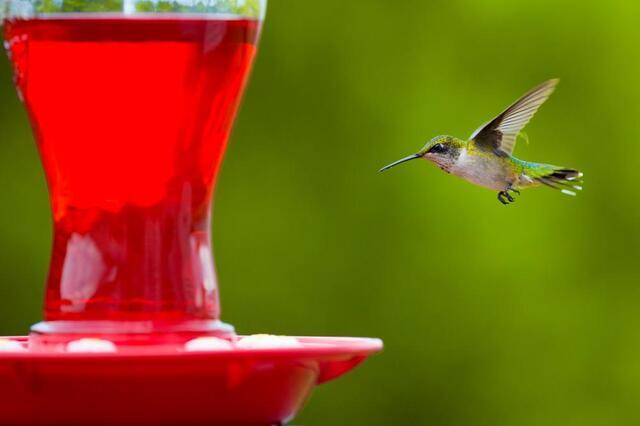Is Mold in Your Hummingbird Feeder Harming the Birds in Your Yard?

While bird feeders with plenty of seeds are a great way to attract many birds, to get a glimpse of a hummingbird you need a different strategy. Hummingbirds feed on nectar so there are two ways to attract them to your yard. The first is by planting certain flowers, like trumpet vine, that can attract them, the other is to fill up a hummingbird feeder. Hummingbird feeders have the advantage of being able to be hung in a variety of places in your yard, the disadvantage is, if you are not careful, hummingbird feeders can be a great breeding ground for mold.
Mold is found in nature so why is it a problem for hummingbirds? Although there is mold found in nature, some molds create serious problems. For example, the mold candidiasis, can make a hummingbird’s tongue swell, preventing them from eating. Other molds can also have negative effects and the sugary mixture used in hummingbird feeders, combined with warm temperatures, can allow mold to grow quickly. So what should you do if you suspect mold? Clean the feeder carefully.
Mold has the potential to be a serious health issue for both birds and humans so you should protect yourself when cleaning the feeder. When searching for humming bird feeders it is best to buy ones that you can take apart so you can access all the inner nooks and crannies for cleaning. It is wise to wear disposable nitrile gloves when cleaning. You will want to start by emptying the feeder completely. Next, rinse the feeder with hot water. After you rinse the feeder, soak it in a mixture of one part white vinegar to four parts water. When the feeder has soaked for a while, scrub all the surfaces thoroughly, with the help of a bottle brush or a pipe cleaner. Make sure to pay special attention to small crevices and feeding ports as mold is often found in these places. Once you finished scrubbing, rinse with clean water. Continue rinsing until you can no longer detect the odor of vinegar. When you no longer smell the vinegar you can refill the feeder with fresh food and return it the outside. Unless the mold situation is severe, you should avoid using soap or bleach. If you feel you must use them, rinse thoroughly to make sure absolutely no residue is left behind.
Keeping hummingbird feeders on your property is a time commitment. The recommended guidelines for cleaning and refilling the feeder is every three days in cool weather, every two days warm weather, and every day in hot weather. The environment plays a big role in how quickly mold can grow. You can’t change the environment outside where you bird feeders are, but you can change your home’s environment to reduce the chance of mold. Keeping the humidity down and removing excess water (like that found in a leaky sink) can have a major impact on mold growth. If you are concerned about potential mold in your home, it is important to work with a company that both removes the mold, and helps you find ways to keep it from returning, like Mold Solutions by Cowleys!




